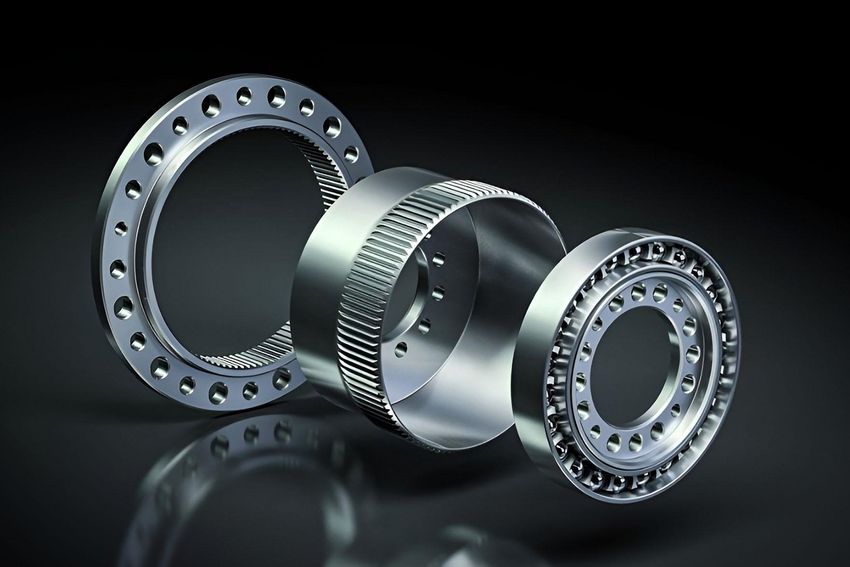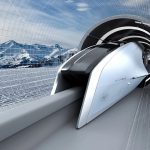🌀 What is a Harmonic Drive? A Game-Changer in Robotics
Robots today can move with an incredible level of precision — from performing delicate surgeries to assembling electronics with micrometer accuracy. But have you ever wondered how they achieve this? 🤔 The answer often lies in a remarkable piece of engineering called the harmonic drive.
🔍 Definition: What is a Harmonic Drive?
A harmonic drive, also known as a strain wave gear, is a mechanical speed-changing device that provides extremely high precision and zero backlash (i.e., no play between gear teeth). Unlike traditional gears, a harmonic drive uses flexible components and a unique wave-like motion to transfer torque efficiently.
⚙️ How Does a Harmonic Drive Work?
A harmonic drive typically consists of three core components:
-
Wave Generator 🌊
This is an elliptical cam inside a bearing, and it’s the part that introduces the wave-like motion. As it rotates, it deforms the flexspline. -
Flexspline 🔄
A thin, flexible, toothed cylinder that deforms to match the wave generator’s shape. It fits inside the circular spline but has fewer teeth, which is key for the gear reduction. -
Circular Spline 🛞
A rigid outer ring with internal teeth. It remains stationary or rotates depending on the application.
🧠 How They Interact:
As the wave generator turns, it deforms the flexspline, pushing its teeth into engagement with the circular spline at two opposite points. Since the flexspline has slightly fewer teeth than the circular spline, each rotation of the wave generator causes the flexspline to rotate slightly relative to the circular spline — giving you reduction in speed but multiplication in torque.
🔍 Why Use Harmonic Drives in Robotics?
Harmonic drives bring multiple benefits that are ideal for robotic applications:
✅ 1. Zero Backlash ⚙️
Backlash refers to the slack or play between gear teeth. Harmonic drives have near-zero backlash, meaning the robot’s joints move exactly as commanded — no lag, no overshoot.
✅ 2. High Torque in Compact Size 💪
Because of the strain wave mechanism, these drives can transmit high torque even in a compact and lightweight form, which is ideal for robot arms and medical robots.
✅ 3. High Reduction Ratios ⚖️
They offer high gear ratios (up to 300:1 or more) in a single stage, which is not possible with traditional gear systems.
✅ 4. Long Lifespan & Reliability 🕰️
Fewer moving parts and a smooth engagement reduce wear and tear, making harmonic drives highly durable.
🧠 Applications in Robotics and Beyond
🤖 1. Robotic Arms
Industrial and collaborative robots (like those used in car manufacturing or electronics assembly) often rely on harmonic drives in their joints for precise control and smooth movement.
🦾 2. Medical Robots
Surgical robots like the da Vinci Surgical System use harmonic drives to provide the micro-level accuracy required during operations.
🛰️ 3. Aerospace & Defense
Due to their precision and compact size, harmonic drives are found in spacecraft, satellites, and military drones, where failure is not an option.
🎥 4. Camera Stabilizers and Gimbals
Harmonic drives help professional camera rigs achieve flawless motion control, especially in film production and drone photography.
📊 Comparing Harmonic Drives with Traditional Gear Systems
| Feature | Harmonic Drive | Traditional Gears |
|---|---|---|
| Backlash | Near-zero | Medium to high |
| Gear Reduction | Up to 300:1 in one stage | Multiple stages needed |
| Size and Weight | Compact and lightweight | Bulky for high torque |
| Precision | Very high | Moderate to low |
| Wear and Maintenance | Low | Higher due to more parts |
🤓 Fun Fact:
The harmonic drive concept was invented in 1957 by American engineer C. Walton Musser, and it’s still considered revolutionary for motion control applications today!
🧠 Summary: Why Harmonic Drives Matter
In a world where precision and reliability are essential, especially in robotics and aerospace, the harmonic drive offers a perfect solution. Its unique wave-based mechanism delivers accurate, compact, and powerful motion control that traditional gearboxes simply can’t match.
From enabling robotic surgery to making humanoid robots walk like humans, harmonic drives are at the core of precision engineering. Whether you’re a roboticist, engineer, or tech enthusiast, understanding how harmonic drives work gives you a deeper appreciation of the incredible machines shaping our future. 🌍🤖


